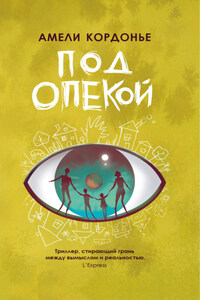L’Abbesse de Castro, together with the stories ‘Vittoria Accoramboni’ and ‘Les Cenci’, first appeared in book form in Paris at the end of 1839. The volume was among the prolific author’s last completed works; remarkably, he wrote it in tandem with his long masterpiece La Chartreuse de Parme, published that same year. But despite its compelling characters and narrative perfection, L’Abbesse remains one of Stendhal’s least understood and appreciated novels.
We know a good deal about the origins and history of The Abbess of Castro and of Stendhal’s other Roman tales. Sometime in March 1833 he acquired from the archives of certain Roman patricians – it is said from the library of the Caetani family – the right to make copies of a number of old and yellowing manuscripts concerning celebrated trials of the sixteenth and seventeenth centuries, which for the most part ended in the torture and brutal execution of the accused. Among these lurid narratives were accounts of popes dispatching cardinals, executions for murder, beheadings, burnings at the stake, and so forth. Most involved high-ranking Church officials and Roman nobility. In 1834 Stendhal records in the margins of one of his own books, ‘I have seven volumes replete with Roman exploits, the telling of which in a translation, without any embellishment, would be sufficiently authentic and typical but probably less entertaining that [than] the actual tales.’ (The italics here and that follow are Stendhal’s English, words and phrases of which he habitually interspersed with his French.) On his death the author left another seven volumes of these copied texts. At some point, he singles out the narratives concerning Victoria Accoramboni and the Cenci and sees in some of his material the possibility ‘To make … a little romanzetto.’ That is, to draft a short novel.
But by 21 December 1834 the author seems to have shifted his position. On this date, writing to the critic Sainte-Beuve, Stendhal says that when he falls on hard times and needs money he will translate some of these manuscripts, and he asks, ‘What should the collection be called? Roman Tales faithfully translated from accounts written by contemporaries (1400 to 1650). But can the account of a tragedy be called a tale?’
He goes on to tell Sainte-Beuve that these short histories, almost all of them tragic, are written ‘in the common speech of the period’ and can ‘be seen as a useful complement to Italian history’ of their day. He characterizes them as composed in ‘demi-jargon’, by which he meant semi-dialect. But they aren’t – not in the texts I have studied, which are of a simple Italian set down long before the Italian language reached a purified and fixed state.
In fact, Stendhal’s translations are more adaptations than the ‘faithful’ versions he liked to trumpet. As one would expect of an impetuous character like him, he has pared down and uncluttered the Italian texts to make his versions more fluent, more readable. With regard to ‘The Bishop of Castro and the Abadessa’, notwithstanding the author’s claims that his sources are two manuscripts, one Florentine, the other Roman – claims that he won’t let us forget throughout the course of the novel – the romanzetto is neither a translation nor an adaptation but an original piece of writing. This is plain to see when the story of Elena and Giulio is compared to other of Stendhal’s Roman tales, the so-called faithful translations. The plot, the character of Giulio himself, the sparkling dialogue, the insights into the protagonists’ psychology, the melodramatic ending are all pure Stendhalian invention. His only source, the thirty-odd-page manuscript account of the affair, the trial, and the scandal of the Abbess of the Convent of the Visitation and the Bishop of Castro, provided no more than a spur, a point of departure, for one of the author’s most perfect creations.
In his lifetime, Stendhal published four of his Roman stories and – as stated – saw but three of them collected in book form. In 1855, some thirteen years after his death, a selection of five of these tales appeared under the name of Chroniques italiennes (a title not Stendhal’s but that of his cousin Romain Colomb and a title that has persisted down the years). From here on, successive editions of these ‘Italian chronicles’ have varied in content according to each editor’s criteria.














